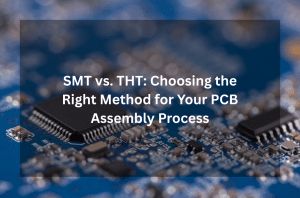The Internet of Things (IoT) represents a technological revolution, interconnecting devices and allowing them to talk and carry out tasks autonomously. As IoT gadgets turn out to be greater state-of-the-art, the Printed Circuit Board (PCB) assembly procedure need to evolve to meet new demanding situations and needs. This blog explores the future of IoT gadgets and the transformative changes in PCB assembly that support the evolution of IoT .
The Growing Importance of IoT
IoT gadgets are everywhere—from smart homes and wearable generation to commercial automation and smart towns. These devices accumulate, analyze, and transmit facts, providing unparalleled comfort, efficiency, and insights. The proliferation of IoT gadgets has led to a growing call for more effective, compact, and dependable PCBs. As we appear ahead, numerous key traits and advancements in PCB assembly are set to shape the future of IoT.
Miniaturization and Increased Complexity
One of the maximum significant tendencies in PCB assembly for IoT gadgets is miniaturization. IoT devices often want to be small and whether or not they may be fitness trackers, thermostats, or sensors in industrial programs. Smaller and more densely packed PCBs are required in response to the demand for smaller electronics.
To obtain this, manufacturers are adopting superior techniques consisting of Surface Mount Technology (SMT), which permits for placing tiny components onto the PCB surface. Additionally, advancements in microelectromechanical systems (MEMS) and flexible PCBs allow even greater miniaturization and flexibility in layout. These technologies permit the creation of fairly compact and complicated IoT gadgets without sacrificing overall performance or reliability.
Improved PCB Materials and Components
The materials utilized in PCB assembly are evolving to keep pace with the demands of IoT devices. Traditional substances are being supplemented or replaced by way of superior substrates including Rogers, Teflon, and flexible polyimide. These substances provide advanced thermal performance, reduced signal loss, and better sturdiness, making them best for high-frequency and excessive-reliability applications in IoT.
Furthermore, the components themselves are getting more sophisticated. Advanced integrated circuits (ICs), together with System-on-Chip (SoC) and Multi-Chip Modules (MCM), are being integrated into PCBs to enhance functionality at the same time as decreasing size and energy consumption. These innovations permit IoT gadgets to perform complicated tasks more efficiently and reliably.
Enhanced Manufacturing Processes
The development of manufacturing techniques has a direct correlation with the growth of PCB assembly. Industry 4.0 and automation technologies are assuming a significant role in the redesign of PCB manufacturing. The precision, speed, and consistency of PCB assembly are being improved with the use of enhanced robotics, automated optical inspection (AOI), and automated X-ray inspection (AXI).
Moreover, the adoption of Artificial Intelligence (AI) and Machine Learning (ML) in production is enhancing the potential to predict and prevent defects, optimize manufacturing schedules, and improve overall yield. These technologies allow producers to produce super PCBs for IoT devices at scale, meeting the growing demand efficiently.
The Role of Environmental Sustainability
As the variety of IoT devices grows, so does the concern over their environmental impact. The future of PCB assembly should deal with sustainability through green materials, strength-green production approaches, and quit-of-life recycling. The industry is moving towards using lead-free solder, halogen-free laminates, and other environmentally friendly materials to reduce the ecological footprint of PCBs.
Emerging Technologies and Innovations
The future of IoT gadgets and PCB assembly may be formed by way of several rising technologies and innovations:
-3-D Printing: Additive manufacturing strategies, which includes 3-D printing, are being explored for PCB fabrication. This lets in for fast prototyping, custom designs, and potentially new shape factors that have been previously impossible with traditional strategies.
-Nanoelectronics: The integration of nanotechnology in PCB assembly holds promise for in addition miniaturization and more advantageous performance. Nanoscale additives and materials can offer superior electric homes, leading to more green and effective IoT devices.
-Flexible and Wearable Electronics: The development of flexible and stretchable PCBs opens up new possibilities for wearable IoT devices and packages where conventional rigid PCBs are impractical. These improvements allow the introduction of revolutionary merchandise that agree to numerous shapes and surfaces.
Advanced Thermal Management
As IoT gadgets turn out to be greater powerful, effective thermal control will become crucial. Innovations in thermal interface substances, heat sinks, and cooling strategies are vital to preserve the performance and longevity of IoT devices.
The position of PCB board design in this evolution cannot be overstated. With meticulous interest to detail in PCB board layout, manufacturers can make sure that IoT gadgets function efficiently and reliably. As we look forward to a destiny brimming with IoT improvements, the collaboration among IoT sensors and IoT board designers and PCB assembly professionals might be key to unlocking new opportunities.
As the industry moves ahead, the integration of superior IoT sensors into sophisticated IoT forums will help to drive the improvement of smarter, more linked devices. The synergy between PCB board design and the overall assembly process could be important in meeting the demands of next-generation IoT programs. By focusing on those key regions, we can stay up for a future where IoT devices are greater powerful, green, and ubiquitous than ever earlier than.

